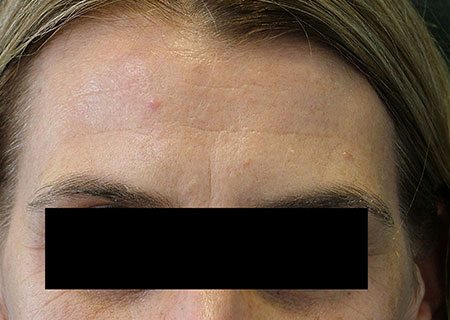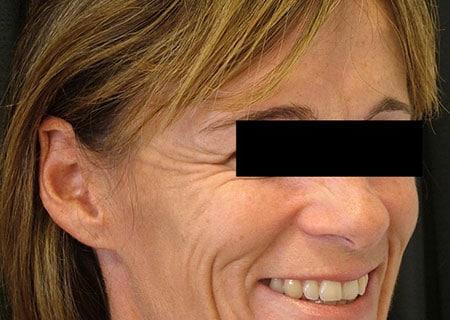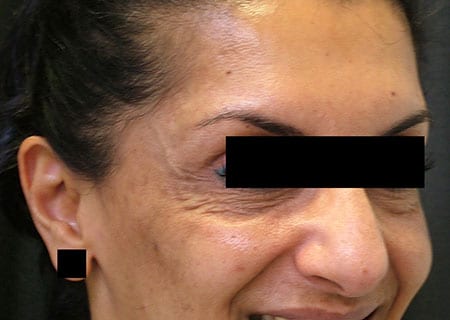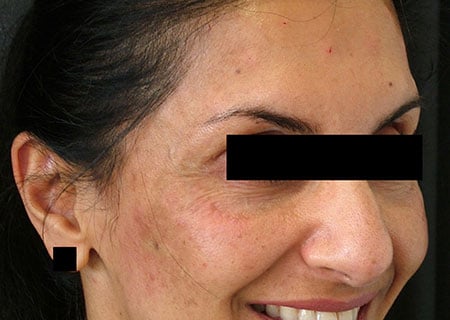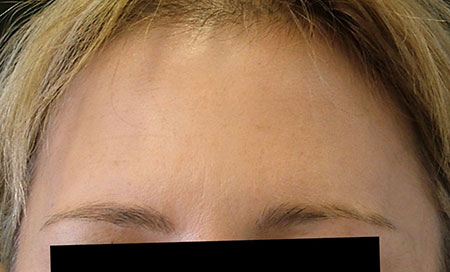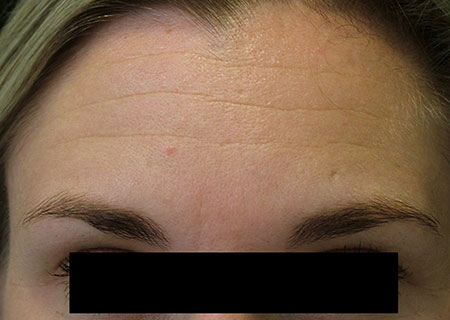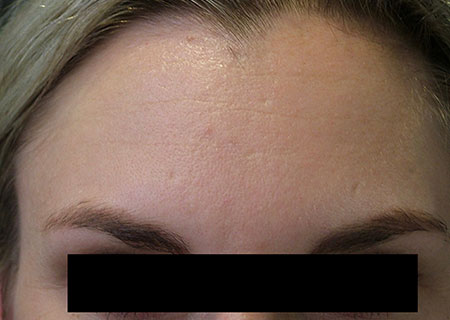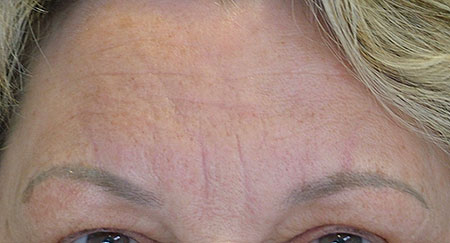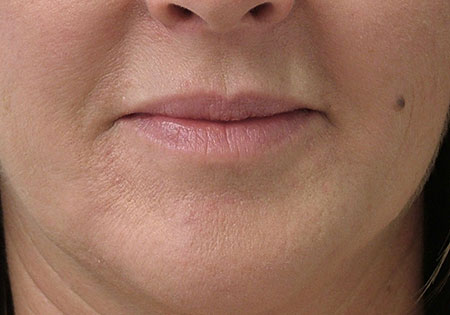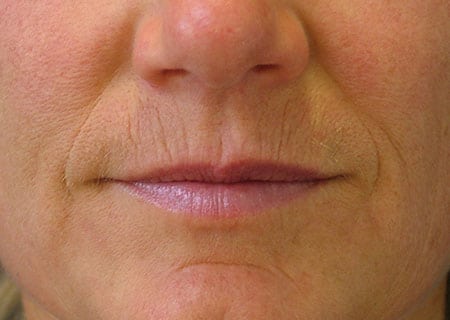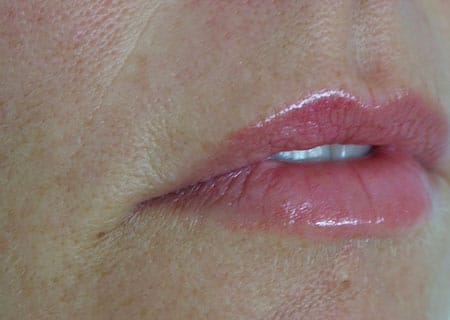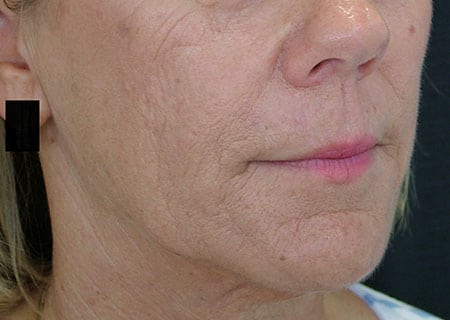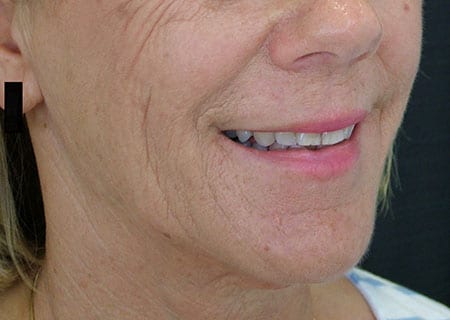Lip lines are harder to treat than they look. You might think you can just inject filler under the line. But this can give a rounded contour above your lip that we call “monkey muzzle” or “The Marge Simpson”. It looks unattractive, especially from the side.
A scientific knowledge of lip anatomy combined with an artistic touch is needed to get a really natural rejuvenation of your lip lines.
I carefully assess the entire area and reconstruct each structure, including the border of the lip, the philtrum and the corners of the mouth, with precisely placed dermal filler.
Choosing the right filler is also crucial. I use Juvederm Ultra for structure, Juvederm Volift for soft support, and the thinnest options, Juvederm Volbella or Belotero Soft, right into the lines themselves.
This is one of my favourite transformations because I love how much happier this wonderful 48-year-old lady looks now. I used 3 syringes of Juvederm over two sessions to lift her mouth corners, increase her lip size, restore her lip border and fill her lip lines. I wasn’t aiming to improve her acne breakout – I think that was just good luck.
I treated this 42-year-old over two sessions using a total of 2 syringes of Juvederm Ultra. Here she is immediately after the second session. I have increased the size of her lips as well as gently treating her lip lines and lines, smile lines and chin crease.
This is the side view of the same patient showing the improvement in her lips and the lines around her mouth. I think you can also see the better skin hydration created by the nourishing hyaluranon in the dermal filler. I took the after photo a couple of minutes after finishing her treatment, so there is a little swelling.
I treated this woman with the softest, most subtle fine line filler available, placing just a little into the lines and a thin border around her top lip to give her crisp definition and stop lipstick bleeding.

